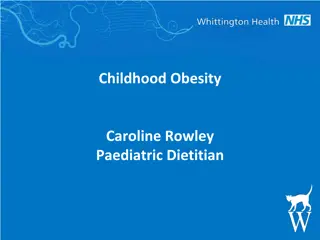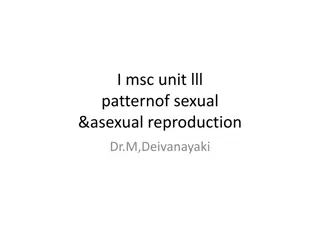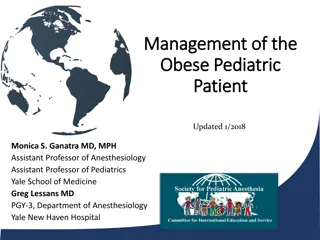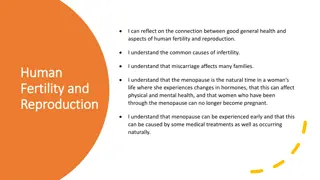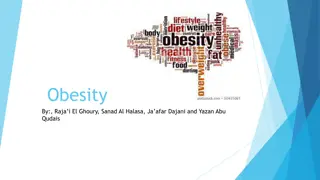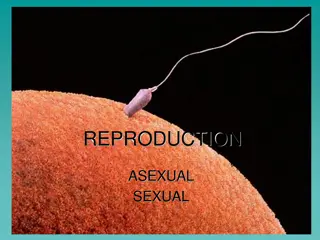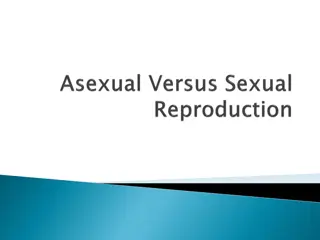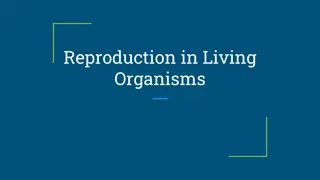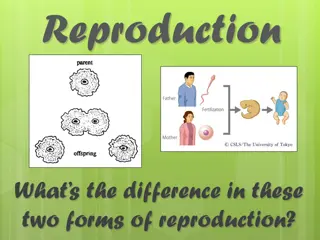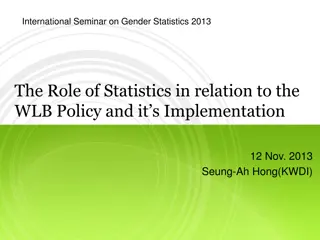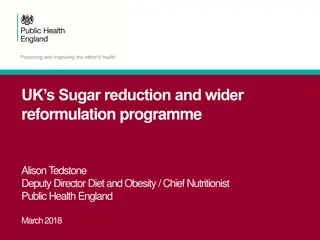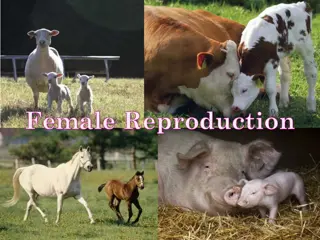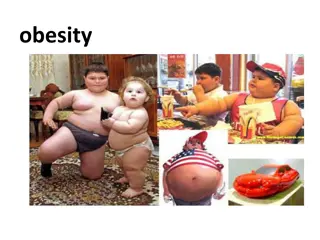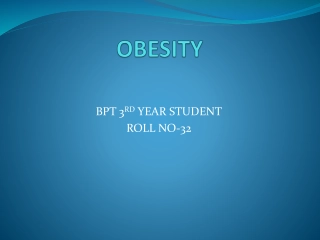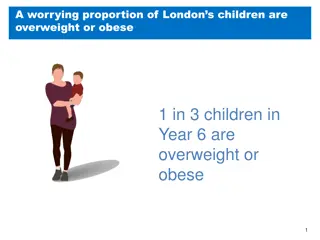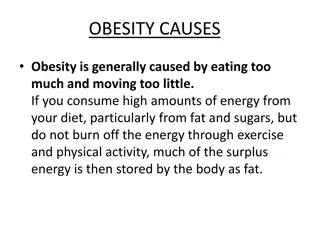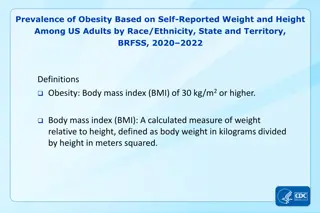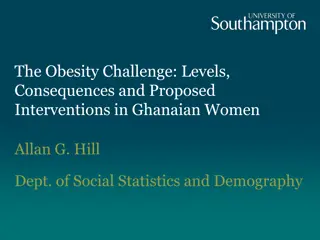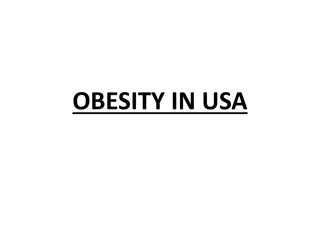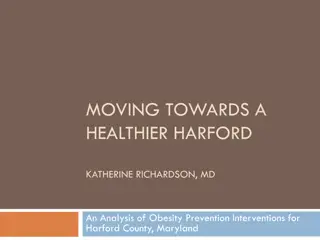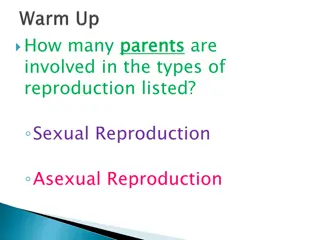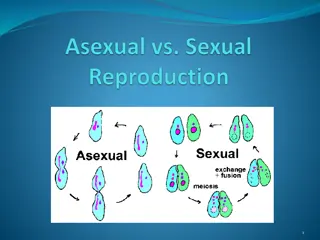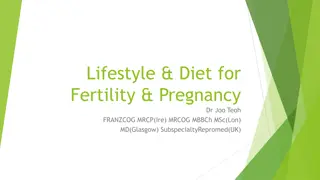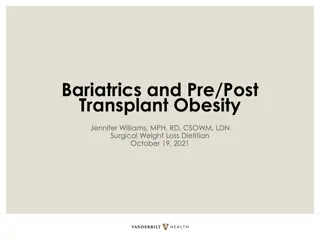Impact of Obesity on Fertility and Reproduction: A Comprehensive Overview
Obesity is a global epidemic impacting fertility in both men and women. It affects natural reproductive potential, infertility treatments, pregnancy outcomes, and child health. The pathophysiology involves endocrine changes, insulin resistance, and hormonal imbalances. Obesity can lead to irregular menstrual cycles, reduced fecundity, and complications like PCOS. Addressing weight issues can improve ovulatory function and pregnancy rates.
Download Presentation

Please find below an Image/Link to download the presentation.
The content on the website is provided AS IS for your information and personal use only. It may not be sold, licensed, or shared on other websites without obtaining consent from the author. Download presentation by click this link. If you encounter any issues during the download, it is possible that the publisher has removed the file from their server.
E N D
Presentation Transcript
Obesity and Infertility Dr.Taheripanah IRHRC . Shahid Beheshti Medical University
Obesity: Epidemiology Obesity : is the new worlwide epidemic of obesity and related morbidity significantly affects fertility and reproduction in both men and women In USA and Europe 60% of all women are overweight (BMI>25 kg/m2) - 30% of them are obese (BMI>30 kg/m2) - 6% of them are morbidly obese (BMI>40 kg/m2) 50% of women 25-44 years old are overweight - 20% of them are obese Definition of obesity Body Mass Index (BMI): 18.5 25 30 35 40 kg/m2 waist circumference to define truncal/abdominal obesity
Classification of obesity (according to WHO) Underweight <18.5 Normal 18.5-24.9 Overweight 25-29.9 Obesity Class I (obese) 30-34.9 Obesity Class II (severe obesity) 35-39.9 Obesity Class III (morbid obesity) >40
Different Aspects of Obesity in Reproduction Effect of obesity on natural reproductive potential Effect of obesity on infertility treatment and IVF results Effect of obesity on pregnancy complications and outcomes Effect of obesity on the health of the child
Pathophysiology of Obesity Regarding Fertility Obesity affects the endocrine system Endocrine changes with central obesity Insulin resistance results in suppression of hepatic SHBG Increased ovarian androgen synthesis and increased circulating free androgen Increased aromatization of androgens to estrogen in adipose tissue Leptin, a peptide secreted by adipocytes, inhibits ovarian follicular activity and steroidogenesis
Effect of Obesity on Fertility Natural Reproduction One third to half of overweight and obese women have irregular menstrual cycles Negatively affects natural reproduction through the interference of ovulation May reduce natural fecundity in ovulatory women- may involve potential adverse effects of insulin resistance Direct correlation between increasing BMI and cycle irregularity Obesity frequently seen in PCOS patients and PCOS most common endocrinopathy in women With weight reduction, ovulatory function and pregnancy rates frequently improve
Obesity and Impaired Reproductive Potential Pathophysiological Unable to receive the semen Menstrual irregularity Secondary sexual dysfunction Decreased dopamine activity and increased serotonin level in brain(Brody,2004) Psychological sociobiological
Obesity and Infertility obese women: x3 times at risk of infertility In the presence of irregular cycles Associated with oligo-anovulation In the presence of regular cycles Probability of pregnancy is reduced by 5% for every BMI unit that exceeds 29 kg/m2 Anovulation even with regular cycles Release of oocytes with reduced fertilization potential Endometrial abnormalities Underlying mechanisms Insulin resistance Hyperandrogenism Elevated leptin levels and leptin resistance
Obesity and IVF outcomes problems with the studies Retrospective: nearly all Heterogeneity: clinical, methodological, statistical different cut-off values for BMI analysis of overweight and obese women as one group different stimulation protocols different starting doses of gonadotropins different metabolic and endocrine patterns in each woman Unable to adjust for confounders Age PCOS Poor response Type of obesity (truncal)
Obesity and infertility treatment There was insufficient evidence to show negative outcome and cycle cancelation in the obese patients ( Retrospective study in 1300 cycle of IVF ,Dokras ,2006 , Obstet Gynecol) They need more medication and higher dose of drugs We need more evidence to establish this subject ( systematic review ,Orvieto, 2oo9) Mid East Fertil J , 2013 )
Obesity and Assisted Reproductive Technologies (A.R.T.) Obesity can be main, secondary or accompanying infertility factor High prevalence of OW or OB women who need A.R.T. The impact of obesity on A.R.T. outcomes is debatable
Obesity and Ovarian Stimulation Total dose of gonadotropins: higher in OW and OB WMD: weighted mean difference Maheshwari et al, 2007 : 37 papers for effects of obesity on ART- 12 papers actually included
Obesity and Ovarian Stimulation Retrieved oocytes: fewer in OW and OB WMD: weighted mean difference Maheshwari et al, 2007
Obesity and Oocyte Retrieval Number of retrieved oocytes in OW/OB women Metanalysis of Maheshwari et al(2007): significantly decreased number Decreased number: 9 studies Similar number: 9 studies Mechanisms Fewer growing follicles Technically difficult retrievals there are no studies confirming more difficult retrievals
Obesity and Ovarian Stimulation Cancellation rates: higher in OW and OB ` OR: odds ratio Maheshwari et al, 2007
Obesity and Ovarian Stimulation OHSS: higher in OW and OB OR: odds ratio Maheshwari et al, 2007
Obesity and Ovarian Stimulation Bellver et al, 2009: the largest single center study (6500 IVF cycles) Total dose of gonadotropins: higher in OW and OB Number of retrieved oocytes: similar in NW/OW/OB Peak E2 levels: similar in NW/OW/OB Studies with opposite conclusions[number of studies] Same response to gonadotropins in NW/OW/OB [4] Lower dose of gonadotropins in OB [5] Fewer days of stimulation in OB [3] Similar peak E2 levels [8]
Obesity and Ovarian Stimulation Gonadotropin Resistance Exogenous FSH threshold increases with BMI Greater amount of body surface Differences in absorption and metabolic clearance Altered peripheral steroid metabolism and decreased SHBG levels Impaired absorption due to increased subcutaneous fat (not likely) Role of leptin: high levels resistance in OB High intra-follicular levels: associated with gonadotropin resistance Inhibitory effect on developing follicles Inhibits FSH and LH stimulated steroidogenesis in granulosa cells
Obesity and Pregnancy Rates BMI >25 vs 20-25: lower pregnancy rates Maheshwari et al, 2007
Obesity and Pregnancy Rates BMI >30 vs <30: Lower Pregnancy Rates Maheshwari et al, 2007
Obesity and Pregnancy Rates BMI >30 vs 20-30: lower pregnancy rates Maheshwari et al, 2007
Obesity and Pregnancy Rates Metwally et al, 2007 no effect of BMI on clinical pregnancy rates Martinuzzi et al, 2008 trend to lower implantation and ongoing pregnancy rates in PCOS patients with high BMI Sneed et al, 2008 analysis of the interaction BMIxAGE effect on pregnancy rates in younger ages (<35 years) BMI has a significant negative impact on implantation, pregnancy, and livebirth rates it may be reasonable to delay treatment in younger women and recommend weight loss
Obesity and Pregnancy Rates In obese: Lower implantation, pregnancy, livebirth rates In overweight: Lower implantation, pregnancy, livebirth rates Raising BMI by 1 unit: odds for pregnancy decrease by 0.98 Reducing BMI by 1 unit: odds for pregnancy increase by 1.19 Bellver et al, 2009
Mechanisms for Reduced Pregnancy Rates Difficult embryo transfers (ET)? ET under ultrasound guidance improves pregnancy rates proven [Cochrane Review, 2007] In obese: difficulty to see the air-bubble of the catheter and tendency for blood in the catheter tip [Martinuzzi et al, 2008] Impaired oocyte-embryo quality? Impaired endometrial receptivity?
Mechanisms for Impaired oocyte/embryo quality High doses of gonadotropins due to resistance Impair embryo quality Abnormal embryonic development Reduced invasional capacity of blastocyst Induce defects in embryos and oocytes Induce chromosomal defects in oocytes Inverse correlation between BMI and intra-follicular HCG concentrations Low concentrations affect embryo quality Becomes significant in obese women
Obesity and Endometrium Bellver et al, 2007 2656 first oocyte donation cycles Lower implantation and pregnancy rates as BMI increases Higher miscarriage rate as BMI increases Lower ongoing pregnancy rate in OW and OB ongoing PR in BMI<25: 45.5% in BMI>25: 38.3%
Obesity and Endometrium Bellver et al, 2007 2656 first oocyte donation cycles Excess weight may exert an extra-ovarian detrimental effect The effect on the endometrium seems subtle but should be taken into account Being overweight implies negative impact as being obese Hyper-estrogenic state due to High activity of aromatase system: increased E production Decreased SHBG: increased free E2 delivered to target tissues Increased estrone decreased inactive metabolites Results in Extremely thick endometrium: if>14mm is associated with lower PR (controversial) More endometrial polyps and more multiple polyps Defective endometrium due to inverse correlation between BMI and E and PG receptors in endometrium LIF in endometrial glands leukocyte subpopulations
Mechanisms for impaired endometrium Other effects Leptin resistance in peripheral tissues Insulin resistance and hyperinsulinemia Reduced glycodelin in endometrium: associated with recurrent pregnancy loss Reduced IGF-binding protein (facilitates adhesion at maternal- fetal surface) Increased acute phase proteins & pro-inflammatory cytokines (IL6, PAI-1, TNFa) Negative effect on endometrium and early embryonic development
Impact of obesity in Egg Recipients Berewer , 2013,Fertil Steril Implantation (%) 40.4 Clinical pregnancy (%) 56.9 Lean Normo weight 39.9 55.9 Overweight 38.5 54.3 Obese 30.9 45.3
Obesity and pregnancy complications Increased miscarriage PIH Gestational diabetes Induction of labor or C/S Structural anomalies related to BMI 25 .01-30 30.01-40 >40 1.25 1.58 3.41 All complications will be corrected in obese patinets but not is overweight(BMI>35kg/m2) (Callaway, 2006 , Med J Austr)
Obesity and miscarriages BMI >25 vs <25: higher miscarriage rates Maheshwari et al, 2007
Obesity and miscarriages BMI >30 vs <30: higher miscarriage rates Maheshwari et al, 2007
BMI cut-off for Fertility Treatment There is not any cut-off point for infertility treatment NICE guideline : BMI <29kg/m2 BFS society guideline : fertility treatment should be postponed until BMI is less than 35kg/m2, but the BMI<30kg/m2 is better in women under 37 and normal FSH Newzeland: reject the fertility treatment in women with BMI > 32kg/m2 This controversy means that a strict BMI rule is impracticable and unenforceable
Similar morphokinetic patterns in embryos derived from obese and normoweight infertile women: A time lapse study Embryos from obese and normo weight infertile women showed similar cleavage patterns, but occurring more slowly, to those from fertile donors. These differences were statistically significant for: t2 (time of cleavage to two-blastomere embryo) (P = 0.016), t3 (P = 0.014), t4 (P = 0.003) t5 (P = 0.040). Belver,Hum Reprod. 2013 ,
The impact of bariatric surgery on IVF outcomes It is better to postpone to 12-18 months after surgery due to vitamin deficiency From 5 patients after Bariatric surgery three of them became pregnant The patient will be high risk after surgery due to preterm and IUGR due to vitamin deficiency and gastric disorders during pregnancy Tan,Seminar in Reprodcutive 2012
obesity and IVF: Conclusions Even though no evidence-based consensus obesity may have negative effects on Ovarian stimulation parameters Oocyte and embryo quality Fertilization rates Embryo transfer Implantation rates Pregnancy rates Miscarriage rates
obesity and IVF: conclusions fewer growing follicles difficult retrievals fewer retrieved oocytes reduced implantation and pregnancy rates poor quality of oocytes low fertilization rates poor quality of embryos poor outcom e increased miscarriage rates impaired embryotransfer due to technical problems impairment of endometrium and its receptivity
The Struggle Over the Millenia to Eliminate Arduous Effort Could Not Foresee Modern Technology
Lower fecundity in Obese women The relative risk of anovulatory subfertiltiy in the obese women with BMI > 27 was 3.1 times of normal BMI( Hassan & Killik,2004) 0.1 unit increase in WHR led to a 30% decrease in probability of conception (Zaadstra,1993) Leptin and hypothalic axis Sexual dysfunction Unable to receive the semen Menstrual irregularity Secondary sexual dysfunction Decreased dopamine activity and increased serotonin level in brain(Brody,2004)
obesity and miscarriages BMI >25 vs <25: higher miscarriage rates Metwally et al, 2008: 25 studies(1964-2006) 16 studies included 16696 patients
obesity and miscarriages Odds ratio of miscarriage after ovulation induction: BMI>25 vs. <25: higher miscarriage rates Odds ratio of miscarriage after IVF/ICSI: BMI>25 vs. <25: higher miscarriage rates OR 1.52, 95%CI 0.88-2.61 Metwally et al, 2008 BUT problem with inclusion criteria (old age, PCOS) and publication bias (negative studies)
Mechanisms for Increased Miscarriages Hormonal alterations Endometrial receptivity Trophoblast function Early embryo development Insulin resistance Impaired progesterone release: inhibits normal corpus luteum function Reduced IGF binding protein Reduced a b3 integrin Reduced adhesion molecules Reduced glycodelin in endometrium Leptin when high or resistance: leads to insulin resistance state when low: detrimental to early embryo development and trophoblast invasion
obesity and IVF: most recent studies Keltz et al, 2010 male overweight status was associated with significantly lower clinical pregnancy rate after IVF (53.2% vs 33.6%), but not after ICSI ICSI may overcome some obesity-related impairement of sperm-egg interaction Zhang et al, 2010 obese women higher FSH dose more stimulation days fewer oocytes lower fertilization rates overweight women fewer oocytes lower fertilization rates fewer cleavaged, high-grade and cryopreserved embryos no differences in pregnancy/miscarriage/live birth rates Vilarino et al, 2010 no differences in FSH dose-number of oocytes-fertilization rate-embryo quality- frozen embryos clinical pregnancy/miscarriage/live birth rates
Obesity and Ovarian Stimulation Conflicting results May be due to confounders PCOS Martinuzzi et al(2008): similar need for FSH but PCOS patients started with lower dose Dokras et al(2006): in BMI>40, PCOS patients had fewer cancellations and stimulation days compared to non-PCOS age Sneed at al (2008): high BMI has a more profound negative effect in number of retrieved oocytes in younger patients Martinuzzi et al (2008): included only young patients and found no effect of BMI on ovarian response





